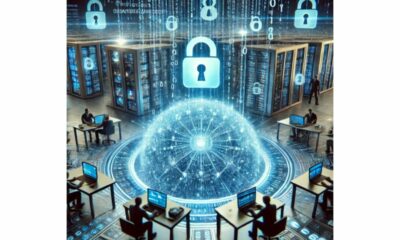Business
Five Cybersecurity Best Practices To Protect Financial Services

These are the top five cybersecurity guidelines to protect financial services from any hacks and assaults.
Ensuring strong cybersecurity measures is crucial in an era where financial transactions and services are increasingly dependent on digital platforms. With the growth of digital payment systems, online banking, and investing platforms, it is more important than ever to safeguard private financial data from online risks.
Cybersecurity safeguards must advance along with technology to prevent personal data from getting into the wrong hands. The surge in digitalization has led to a notable increase in cyberattacks and data breaches. Cybersecurity is critical in today’s finance world, since almost all information is available online. We engage in a variety of online activities across multiple websites, whether it be web browsing or sharing personal information.
We usually underestimate the significance of cybersecurity as we depend more and more on online platforms to exchange information and increase productivity. We run the danger of being the target of cyberattacks and data breaches as a result of this neglect. The following are some suggestions that you can use to protect financial services.
Advice for Preserving Financial Services:
Put Multi-Factor Authentication (MFA) into Practice:
Make it necessary for users to verify their identity via several methods, like security tokens, biometrics, and passwords. This increases security and makes it more difficult for unauthorized users to access accounts.
Update Security Software On a Regular Basis:
Make sure that all software is up to date with the most recent security patches and upgrades, including operating systems, antivirus software, and firewalls. This aids in defense against known flaws and exploits.
Teach Staff and Users:
Employees and users should receive thorough cybersecurity training that covers common dangers including malware, phishing assaults, and social engineering. Urge them to remain watchful and to report any questionable activities right away.
Employ Encryption:
To avoid unwanted access in the event of a data breach, encrypt critical data while it’s in transit and at rest. Adopt robust encryption mechanisms for database administration, file storage, and communication.
Keep an eye on network activity:
Keep an eye out for indications of questionable behavior or illegal access by routinely monitoring network traffic and user activity. Use intrusion prevention systems (IPS) and intrusion detection systems (IDS) to quickly detect and address possible threats.
-

 Business4 weeks ago
Business4 weeks agoGoing Beyond Expectations: Apex Service Partners and Putting People First
-

 Business4 weeks ago
Business4 weeks agoKurt James Wichman Explains How Global Brands Go Local
-

 Entertainment4 weeks ago
Entertainment4 weeks agoVISHAAD, Starring Rajeshwar, Ashish Vidyarthi and Ketaki Narayan, Heads to KIFF 2025!
-

 Real Estate4 weeks ago
Real Estate4 weeks agoStephen Monro on the Evolution of Mediation Services in Real Estate
-

 Business3 weeks ago
Business3 weeks agoWhy Hundreds Choose Movers in Raleigh for a Fresh Start
-

 Travel3 weeks ago
Travel3 weeks agoBwindi’s Gorilla Tourism: Saving Wildlife, Empowering Communities
-

 Tech3 weeks ago
Tech3 weeks agoGoogle Offers New Travel-related Features To Search And Launches Its AI “Flight Deals” Tool Around The World
-

 Education2 weeks ago
Education2 weeks agoJoseph Curran: Using Legal Writing and Advocacy to Simplify Complex Issues for Clients






















